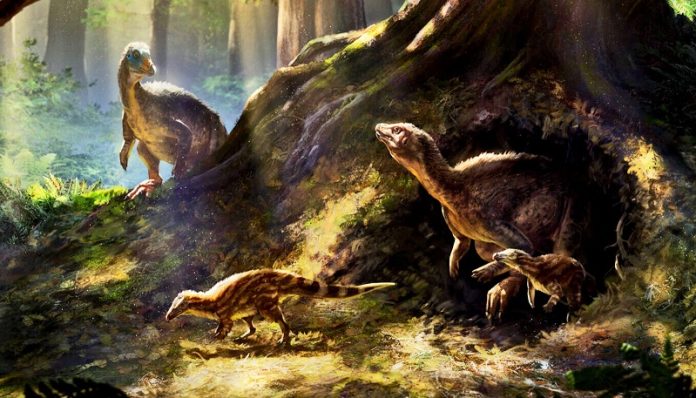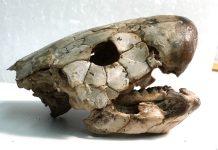
Have you ever heard of a dinosaur that might have lived underground?
That’s what a recent study suggests about Willo, a plant-eating dinosaur whose skull was CT scanned.
This study, the first of its kind, suggests that some dinosaurs might have spent time underground, just like some animals do today.
Willo, a dinosaur specimen at the North Carolina Museum of Natural Sciences, belonged to a species called Thescelosaurus neglectus.
This little-known dinosaur was small for dino standards – about 12 feet long and weighed around 750 pounds. It lived in North America around 66 million years ago, just before a massive extinction event wiped out the dinosaurs.
David Button, a researcher associated with the University of Bristol in the UK and former scholar at the North Carolina Museum of Natural Sciences, decided to take a closer look at Willo.
Using a CT scanner, Button reconstructed the soft tissues in Willo’s skull that were lost over time.
This allowed the team to learn about the dinosaur’s brain and senses, like smell, hearing, and balance.
Lindsay Zanno, another researcher involved in the study, noted that they initially thought of Thescelosaurus as unremarkable. But as they delved deeper, they found something special about Willo’s sensory capabilities.
One key finding was that Thescelosaurus had a limited hearing range. It could only hear about 15% of the frequencies humans can and even less compared to dogs and cats.
It wasn’t good at picking up high-pitched sounds. Interestingly, the frequencies it could hear overlapped with those of the fearsome T. rex. This might have been useful for detecting these predators.
But where Thescelosaurus lacked in hearing, it made up for with an incredible sense of smell. Its olfactory bulbs, the brain regions for processing smell, were very well developed – bigger than any other known dinosaur and similar to modern alligators.
This keen sense of smell might have helped Thescelosaurus find food underground, like roots and tubers.
The dinosaur also had an excellent sense of balance. This ability, important for understanding body position in space, is a trait often found in burrowing animals.
Considering these findings, the researchers believe that Thescelosaurus might have spent part of its life underground. Its poor cognitive and hearing abilities, strong sense of smell and balance, and robust arms and legs are all traits of animals that burrow or dig.
Though it’s not certain that Thescelosaurus lived underground, its ancestors did, and its unique sensory abilities suggest it might have engaged in similar behaviors.
The idea of dinosaurs living beneath the ground, possibly even under the feet of giants like T. rex and Triceratops, is fascinating and adds a new layer to our understanding of these ancient creatures.
Zanno emphasizes that there’s still much to learn about the sensory abilities of most dinosaurs. This uncertainty means there could be many more exciting discoveries ahead.
For now, the once-overlooked Willo is getting its due attention and is currently on display at the North Carolina Museum of Natural Sciences, showcasing a possibly hidden side of dinosaur life.



